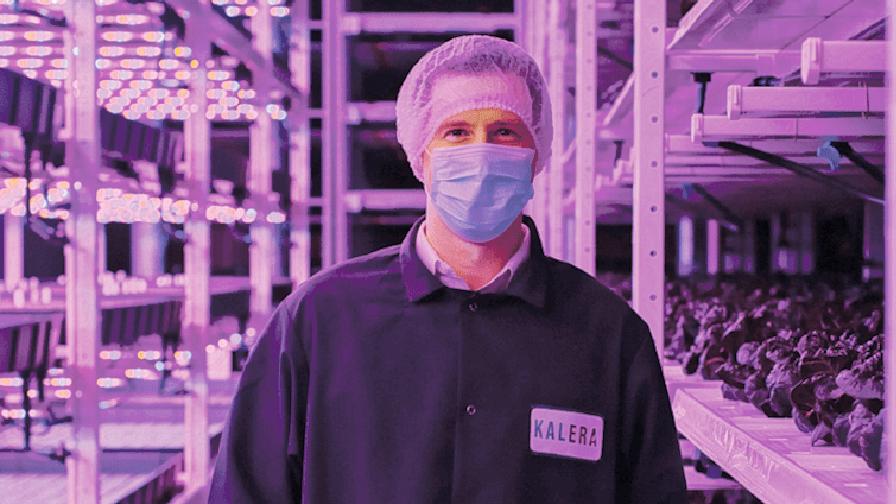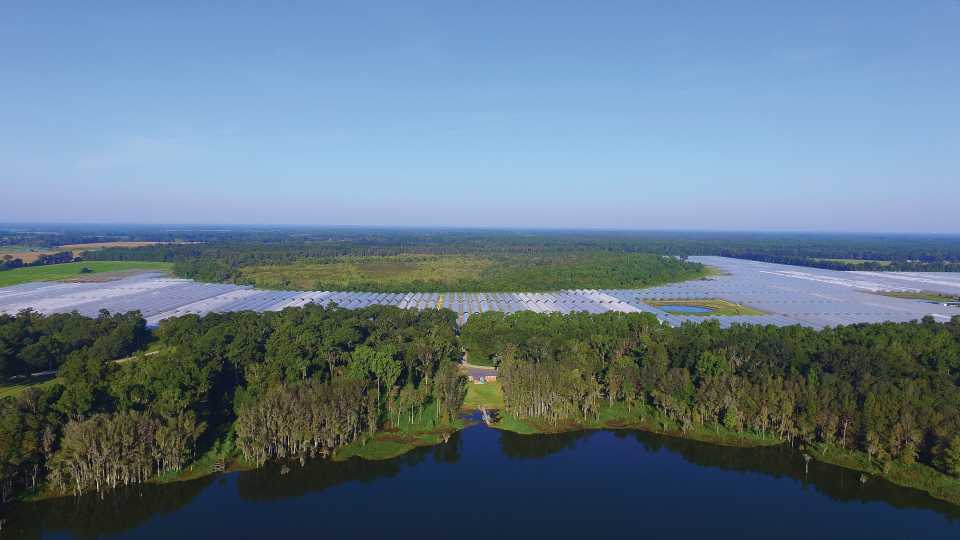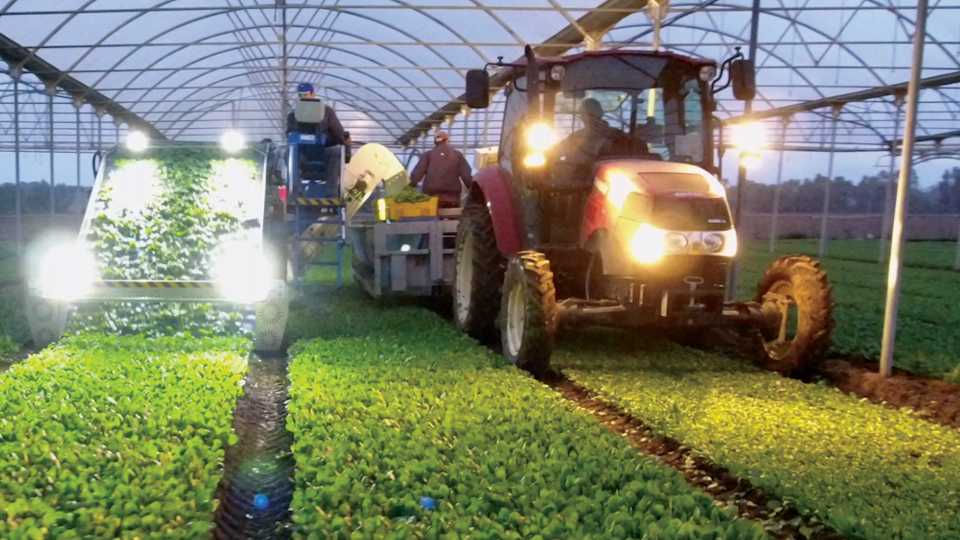Will COVID-19 Change How and Where Our Food Is Grown?

Lack of available equipment and logistical logjams are just some of the COVID-19-related factors impacting the specialty crop agriculture industry.
Photo courtesy of U.S. Customs and Border Protection
COVID-19 is a world-altering event that unfortunately is still unfolding. Besides the lives lost, the pandemic also exposed how systems can break down when disrupted by a global event on the scale of the virus.
One of the areas getting the most attention is major delays in shipping and logistics. The ships that move goods across the globe are anchored offshore at major ports waiting to unload or load. In early September, there were 125 ships at berth or anchored in Long Beach/Los Angles — a new record. Ports in China also are backed up at record levels.
Consumer demand, COVID-19 shutdowns, lack of labor, shortages of ships/containers and trucks all are causing the back up. Paul Meador, owner of Everglades Harvesting and Hauling, says there’s a couple factors impacting the trucking business. The company hauls citrus as well as other specialty crops.
“Right now it is almost impossible to buy new equipment like trucks,” he says. “Major manufacturers like Mack and Volvo are running a year out on orders. This has pushed the used vehicle market to unusually high levels. In addition, driver problems have been an ongoing issue that continues to get worse. Estimates show there is a shortage of 290,000 drives in the U.S.”
Not New Issues
Some of the things impacting agriculture during the pandemic are not new. The trucking shortage being one of them. Another major factor is the lack of labor, which is critical in specialty crop production. The labor issue only worsened as stimulus dollars flowed through the economy in response to COVID-19.
Many specialty crop growers in Florida have turned to the H-2A Visa program to source workers. Meador warns as Florida’s minimum wage increases, the program’s Adverse Wage Effect provision is going to drive labor costs much higher.
“Florida is going up to $15 minimum wage by 2025,” Meador says. “The Adverse Wage Effect has been running 30% to 35% higher than the minimum wage. You are talking about wages for farm labor that exceed $20 per hour. That’s on top of all the other expenses associated with the program like required housing and transportation.
“With this program we have an adversarial relationship with the Department of Labor who runs it. There’s two options — A, use local labor, who will no longer do the work, or B, H-2A workers. There is no option C. We need a friendly Department of Labor when it comes to agriculture programs like H-2A or we are going to have crops rotting in the fields.”
The continuing labor crisis in agriculture is driving innovation and automation. In a recent Florida Grower® magazine Blueberry State of the Industry survey, 18% of growers surveyed are now mechanically harvesting their berries. Florida-based Harvest CROO Robotics is several generations deep in developing its strawberry picking robot. The robot aims to replace hand labor and harvest, grade, and pack strawberries autonomously. Citrus growers also are showing renewed interest in mechanical harvest using new grove designs and over-the-top harvest machines.
What is New
While COVID-19 exacerbated existing problems for specialty crop growers, what was new for many consumers during the pandemic was empty grocery store shelves and rising prices for food and just about every other good. It was and remains a stark reminder of the razor thin margins the population runs on in the era of “just-in-time” inventories. One cog in the wheel goes down and empty shelves follow.
The U.S consumer confidence index showed the effect and fell off a cliff at the beginning of the pandemic. It began rising again this year but fell again in August as the Delta-driven COVID-19 surge ensued.
“Consumer confidence retreated in August to its lowest level since February 2021,” says Lynn Franco, Senior Director of Economic Indicators at The Conference Board. “Concerns about the Delta variant—and, to a lesser degree, rising gas and food prices—resulted in a less favorable view of current economic conditions and short-term growth prospects.”
Power of Proximity
The trend of controlled environment agriculture in greenhouses or vertical farms closer in proximity to the consumer markets they serve continues. Orlando-based Kalera, a grower of indoor leafy greens, is making big moves in the vertical farming space. After openings it first farm near the Orlando International Airport in 2019, it has expanded operations to Atlanta and Houston with more U.S. locations planned. In August, the company purchased German-based &ever, which has vertical farm operations in Europe and Asia. According the Kalera CEO Daniel Malechuk, the power of proximity was one of the key goals when Kalera was envisioned and established.

Daniel Malechuk stands among vertical rows of Kalera leafy greens. He says their farms can deliver product on the same day it is harvested in many cases.
Photo courtesy of Kalera
“Our strategy is redefining what pick-to-plate means for freshness and for the future of farming,” Malechuk says. “Long supply chains of 3,000 plus miles, or heck even 1,000 miles, is a long way to ship fresh produce. Our key focus has been to be right in the heart of cities where our consumers are located. That’s what we love about Orlando because our key customers are literally within 5 miles away. So, we can deliver within minutes of harvest compared to 10 days up to two weeks for delivery of product from thousands of miles away to get cross country. For our Publix customers, we can have product harvest, delivered, and likely on the shelf for sell the same day — the next day at the latest.”
“One of the exciting things about our Atlanta location is it produces 12 times more lettuce than previously the entire state of Georgia produced. That farm grows 13 million heads of lettuce per year. Our new Houston location will produce 11.2 million heads annually.”
In Jennings, FL, an innovative high-tunnel operation called Cultiva was established in 2016 to bring a significant supply of baby leaf greens to the East Coast. The greens are grown under high tunnels with an eye toward environmental, social, and economic sustainability. It is the largest covered baby leaf farm on the East Coast at 150-net acres under tunnels. Those acres produce a crop six times per year. The farm also utilizes mechanical harvesting and other automation to help reduce labor force needs.

Cultiva is the largest producers of leafy greens under high tunnels on the East Coast. The Jennings, FL, operation was established as an alternative source to West Coast production to reduce transportation costs and improve freshness.
Photo courtesy of Cultiva
“Not only is the transit of the product much shorter the economics work better,” says Federico Boscolo, Cultiva’s Farm Manager. “Half the cost of greens shipped from the West Coast is transportation. Product shelf life is better because it’s fresher not having spent days on a truck. Production under the tunnels also provides continuity of supply, because unless we get extreme weather, Mother Nature doesn’t have much impact on production.”
As for the COVID-19 effect, Boscolo notes, “Centralization of production and supplies make sense in some cases, but I think more companies will be considering a slightly more decentralized model in the future to spread risk of inventory being tied up in one spot. In the early days of the pandemic, looking at what happened to the large players in the poultry industry with supply disruptions teaches a good lesson.”

Farming operations like Cultiva are turning to mechanical harvest to reduce expenses and deal with labor shortages.
Photo courtesy of Cultiva
While COVID-19 reinforced the “buy local” message, it is not likely agriculture will leave rural America to surround urban centers to create self-sustaining islands of food production. Agriculture needs those wide-open spaces to feed the nation and others around the world, especially when it comes to commodities like corn, beans, and cotton. Meador notes the not-in-my-back-yard mentality of many, “Urban consumers like farmers a lot more than they like farming.”










